Central motor vs hub motor in an e-bike, which is better?
The world of e-bikes has been divided into two: those that mount the central motor, that is, on the bottom bracket axle; and those that do it in the hub, practically all in the rear hub. Which option is better?
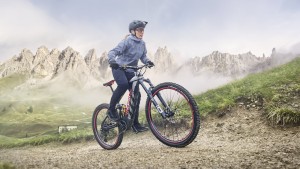
Central motor or hub motor, that is the question
Everything is nuanced and the statement that the motor of an e-bike is better in one place or another is also. Of course, we can have a preference for one of the options, but we must understand that both have their advantages and disadvantages.
In a comparison around 5 factors, one or the other will come out on top depending on the variable analyzed. Although we have a final verdict, we insist that two motors can be compared, but it is impossible to compare two different needs of a cyclist, so the final decision is yours considering what you really need, whether a hub motor or a central e-bike motor.
5 factors compared between a hub motor and a central e-bike motor
Size and weight
RECOMENDADO

Complete list of the highest paid cyclists of 2025

How many calories are burned when cycling

What is heart rate variability and how does it affect the cyclist?

Change wheels if you want to transform your bike's behavior

What bike size do you need? Here's how to find out

How does age affect performance and recovery?
Here there is something very obvious: a central motor weighs more and takes up more space than a hub one. It admits no debate. So if we talk about a weight issue, or if we talk about a size issue, go for a hub motor.

In fact, many urban e-bikes mount it in the hub for this reason, because they prioritize a versatile bicycle, sometimes even foldable, and a reduced weight to move around the city.
Performance and response
To understand the operation of both motors, one thing must be understood: the bottom bracket motor can operate even without a chain. Because its operation depends on the movement of the cranks, so as long as you pedal, it works. This gross statement means one thing: the motors, all of them, operate based on the speed that some pulleys carry, in one case on the wheel, in another on the pedals.
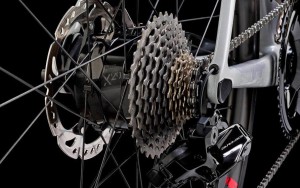
That's why a bottom bracket motor is more efficient, and responds faster and better. Because if you are climbing a steep hill and your rear wheel is slow, the motor's effort and response will be slow and difficult. Let's say you're squeezing the motor. If, on the other hand, you take advantage of the speeds that your development allows you and reduce the chainring or increase the sprocket, this will allow you to turn the entire gear more agilely, so the motor will respond better. In this regard, the central motor is better on an e-Bike, and that's why it is always used on mountain bikes.
On the other hand, a hub motor consumes much less energy, so they are more efficient with a similar charge battery than a bottom bracket or central motor. That's why they are used a lot on touring bikes or urban bikes that don't have to overcome large slopes in theory.
Management and balance
The operation or handling of both e-bike motors is quite simple. Here there would be a technical tie. It is true that normally, a central or bottom bracket motor is associated with a power control device, with levels and some other configuration. But for now it is something as simple and intuitive as pressing a button to increase assistance and another to decrease it. So technology is not a barrier in this case, hence the tie between both e-bike motors.
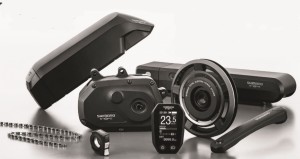
There is also another interesting aspect, the balance of weights. A central motor does not alter this balance, since let's say the weight is at your balance point, aligned with it, so it does not alter anything. However, putting more weight on the rear wheel than on the front one, can mean a certain balance, imperceptible on quiet routes, but decisive if we were talking about competition.
Maintenance
In general, if the maintenance is going to be done in the workshop, this aspect is the least important to you. But if you take care of your e-bike, it's important. A hub motor, in general, requires cheaper maintenance than a bottom bracket one in a workshop. This is a general rule, which of course depends on what breakdown we are talking about.

However, for your own maintenance, a hub motor can be cumbersome. Being mounted on the wheel, if you have to do the most common repair for a cyclist, which is fixing a puncture, it will be more cumbersome because removing the wheel involves removing the motor. This does not happen with a central motor. But, as we said, if you don't handle much, better leave it in the hands of a professional, and in that case maybe a hub one is cheaper in your e-bike.
Price
The hub motor wins by a landslide. It's logical, since a hub motor for e-bike does not require altering the geometry or thermoforming of a bike, because by going on the wheel the frame can be exactly the same as without a motor. A central motor requires creating a new bike, and that entails a higher price.
On the other hand, the central motor has experienced tremendous development in the last five years, which means greater use of technology and innovation and greater use of materials. Of course, this also affects the final price, which is much higher than that of a hub motor for e-bike.
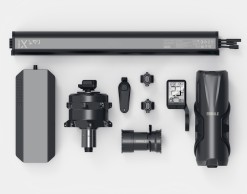
The general summary can be made in one idea: if you need a powerful motor, that responds to certain challenges, that gives greater performance to your demands, and if the price or weight is not a problem for you, always choose a central e-bike motor. On the other hand, if you are looking for a dynamic e-bike, with less intrusive assistance, or and if your mission is to move around the city with agility with something that weighs little, choose a hub motor for e-bike.
Best motors for e-Bike in 2023
There are many motor models that we find in electric bicycles, in many cases developments of the manufacturers of each bike to specifically suit their needs. However, the brands specialized in the construction of motors are ultimately the ones that usually equip the main models.
It is curious that most of the most used motors of this type are of the central type, after all they are the ones that involve the most development and, therefore, the bike brands prefer to save this work on their central motor bikes. Only Mahle breaks the trend with its fantastic motor, chosen by those brands that seek to manufacture an ebike that behaves as closely as possible to a muscular bicycle. These are some of the reference models
Bosch Performance Line CX
Bosch is one of the classic brands in e-bike motors, in fact, they have been equipping this type of bike almost since they began to break into the market. Their CX line tries to contain to the maximum weight and volume but giving priority to great performance.
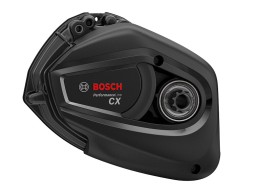
- Weight: 2.9 kg
- Maximum power: 600 W
- Torque: 85 Nm
- Available batteries: 500Wh, 625Wh, 750Wh
Specialized 1.2 SL
Although this model is an exclusive development by Specialized for its famous Turbo Levo, it is essential to include it in this selection as it combines excellent performance with a very low weight and a tremendously natural assistance that have made Morgan Hill e-bikes the dream of many cyclists.
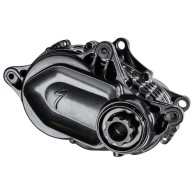
- Weight: 1.95 kg
- Maximum power: 320 W
- Torque: 50 Nm
- Available batteries: 320 Wh
Shimano EP801
In a market as big as the e-bike market, a giant like Shimano could not be missing. This 801 is at the top of its range including technologies such as its AutoShift automatic shifting depending on the cyclist's pedalling thanks to the integration with the brand's Di2 groupsets or the FreeShift system that allows shifting even when not pedalling, for example, to select the appropriate gear ratio when cornering.

- Weight: 2.7 kgg
- Maximum power: 600 W
- Torque: 85 Nm
- Available batteries: 504Wh, 630Wh
Fazua Ride 60
Fazua were one of the pioneers in the search for the lightest possible motor and assistance without so much raw power, making it possible to provide unobtrusive assistance that maintains the feeling of pedalling on a conventional bike. This has served to make it a perfect choice for road e-bikes that still look and behave like their muscular equivalents.

- Weight: 1.96 kg
- Maximum power: 450 W
- Torque: 60 Nm
- Available batteries: 430 Wh
TQ HPR50
The Germans at TQ have caused a small revolution in the world of mountain bike oriented motors with a model that seeks maximum lightness without sacrificing performance. At the same time, it has a smooth and silent operation by renouncing the usual planetary gears that usually house the motors inside to adapt the rotation of this to the movement of the bike, which are replaced by its Harmonic Ping Ring technology.
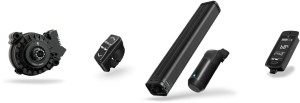
- Weight: 1.85 kg
- Maximum power: 300 W
- Torque: 50 Nm
- Available batteries: 360 Wh
Mahle X20
The only representative of hub motors in this selection, not because there are no other brands but because these types of motors are usually developed by the brands themselves. Hence the merit of Mahle standing out among all the hub motors with a barely intrusive behaviour, great autonomy and a weight that allows an e-bike to behave exactly the same as a conventional bike.
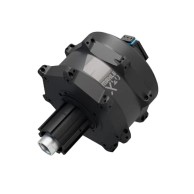
- Weight: 1.39 kg
- Maximum power: 250 W
- Torque: 55 Nm
- Available batteries: 236 Wh, 350 Wh